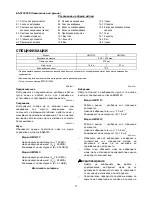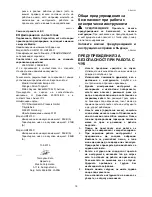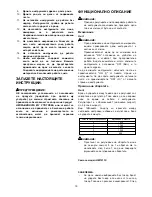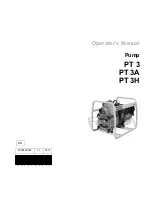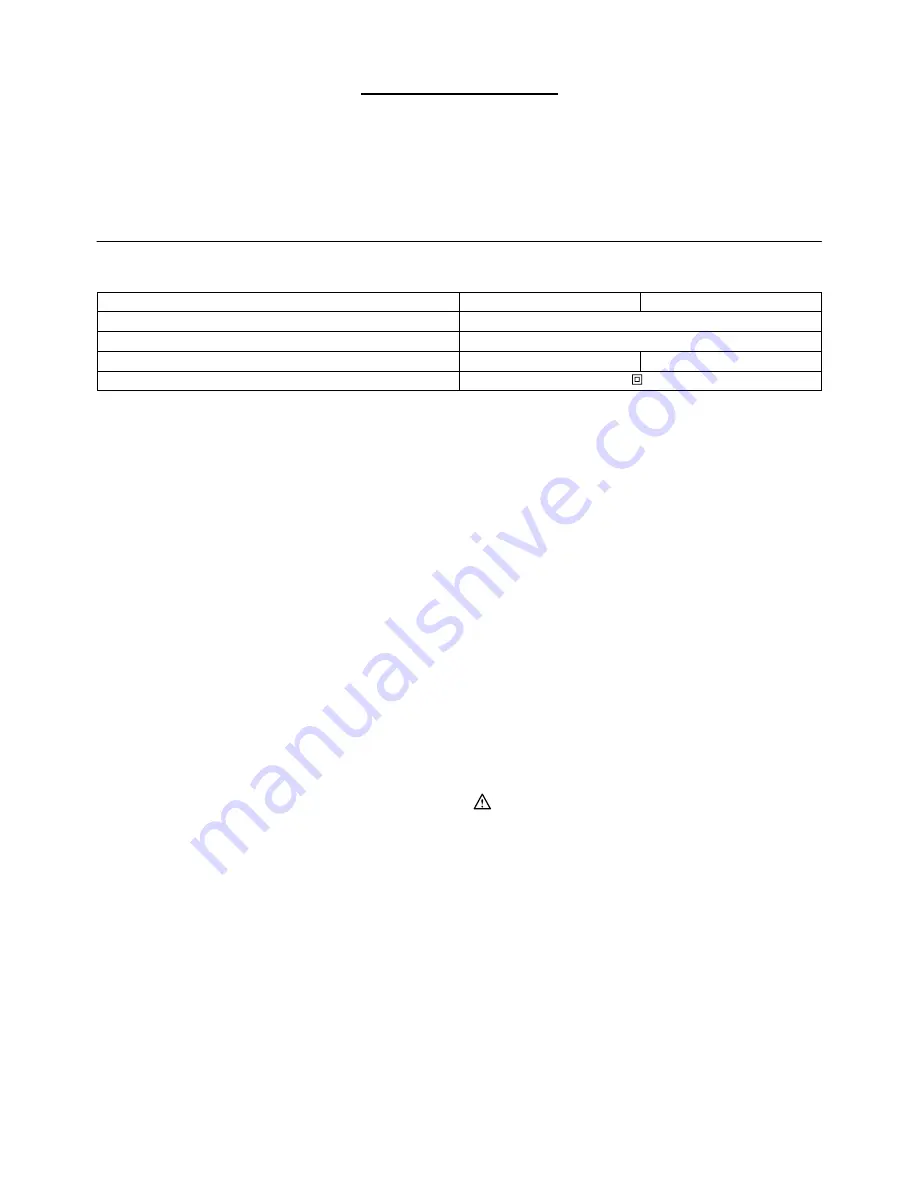
4
ENGLISH (Original instructions)
Explanation of general view
1-1. Switch lever
2-1. Adjusting dial
3-1. Power-ON indicator lamp (green)
3-2. Service indicator lamp (red)
4-1. Side handle
4-2. Clamp nut
5-1. Bit shank
5-2. Bit grease
6-1. Releasing cover
8-1. Releasing cover
9-1. Change ring
12-1. Screws
13-1. Connector
13-2. White
13-3. Black
14-1. Screwdriver
14-2. Crank cap cover
15-1. Grease
16-1. Connector
16-2. White
16-3. Black
SPECIFICATIONS
Model HM1213C
HM1203C
Blows per minute
950 - 1,900 min
-1
Overall length
576 mm
Net weight
10.8 kg
9.7 kg
Safety class
II
• Due to our continuing program of research and development, the specifications herein are subject to change without notice.
• Note: Specifications may differ from country to country.
• Weight according to EPTA-Procedure 01/2003
ENE045-1
Intended use
The tool is intended for chiselling work in concrete, brick,
stone and asphalt as well as for driving and compacting
with appropriate accessories.
ENF002-2
Power supply
The tool should be connected only to a power supply of
the same voltage as indicated on the nameplate, and
can only be operated on single-phase AC supply. They
are double-insulated and can, therefore, also be used
from sockets without earth wire.
ENG905-1
Noise
The typical A-weighted noise level determined
according to EN60745:
Model HM1213C
Sound pressure level (L
pA
) : 75 dB(A)
Sound power level (L
WA
) : 95 dB(A)
Uncertainty (K) : 2.53 dB(A)
Model HM1203C
Sound pressure level (L
pA
) : 81 dB(A)
Sound power level (L
WA
) : 95 dB(A)
Uncertainty (K) : 2.1 dB(A)
Wear ear protection
ENG900-1
Vibration
The vibration total value (tri-axial vector sum)
determined according to EN60745:
Model HM1213C
Work mode : chiselling function with side handle
Vibration emission (a
h,CHeq
) : 7.0 m/s
2
Uncertainty (K) : 1.5 m/s
2
Model HM1203C
Work mode : chiselling function with side handle
Vibration emission (a
h,CHeq
) : 15.5 m/s
2
Uncertainty (K) : 1.5 m/s
2
ENG901-1
•
The declared vibration emission value has been
measured in accordance with the standard test
method and may be used for comparing one tool
with another.
•
The declared vibration emission value may also be
used in a preliminary assessment of exposure.
WARNING:
•
The vibration emission during actual use of the
power tool can differ from the declared emission
value depending on the ways in which the tool is
used.
•
Be sure to identify safety measures to protect the
operator that are based on an estimation of
exposure in the actual conditions of use (taking
account of all parts of the operating cycle such as
the times when the tool is switched off and when it
is running idle in addition to the trigger time).

















